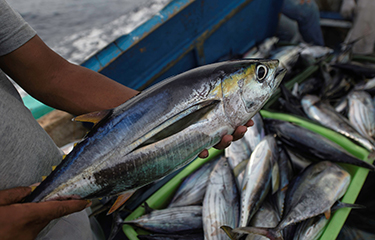The International Seafood Sustainability Foundation’s (ISSF) “Status of the Stocks” report covering the status of the world’s tuna fisheries has found that most catch continues to be sourced from stocks at “healthy” levels of abundance.
The twice-yearly report by the ISSF – a cooperative program involving scientists, the tuna industry, and the World Wildlife Fund – breaks down the status of the world’s tuna stocks. The latest report represents the second since March 2020, when the COVID-19 pandemic first started impacting the work of regional fishery management organizations (RFMOs).
For that reason, the ISSF said, the summaries by RFMOs may not be as accurate as they are normally.
“RFMOs have issued exemptions to certain monitoring requirements, such as observer coverage,” the report states. “As such, the summaries of management measures provided for the stocks, particularly in relation to observer coverage, may not be completely accurate in reflecting the monitoring that is ongoing during this exceptional period.”
All told, the report found that the status of most stocks remains relatively unchanged from the last report in 2020. In total, 87.6 percent of the global catch is caught from stocks at a “healthy” level of abundance, 9.6 percent is caught from overfished stocks, and 2.8 percent came from stocks at an “intermediate level of abundance.”
Atlantic Ocean bigeye, Indian Ocean yellowfin, and Pacific bluefin tuna are all considered overfished, and are subject to overfishing. Indian Ocean albacore and bigeye continue to be subject to overfishing. All skipjack and most albacore remain healthy.
Of the 23 stocks fished commercially, 65 percent are at a healthy level of “spawning biomass,” 22 percent are at an intermediate level, and 13 percent are overfished. In addition, 74 percent of the 23 stocks have a well-managed mortality rate, with 22 percent experiencing overfishing.
The total catch from all major tuna stocks, the report said, was roughly 5.3 million metric tons, or a 2 percent increase in 2019 compared to 2018.
Gear type remained relatively consistent as well: 65.7 percent of the catch is made via purse-seining, 10 percent by longline, 7.8 percent by pole-and-line, 3.7 percent by gillnet, and 12.8 percent by miscellaneous.
The previous ISSF report had downgraded the Eastern Pacific bigeye tuna stock from a “green” to a “yellow” rating, and according to the latest report, fishing is “expected to be fluctuating around the maximum sustainable yield level.” As a result, it remains in a yellow cautionary rating.
Photo courtesy of the International Pole & Line Foundation







